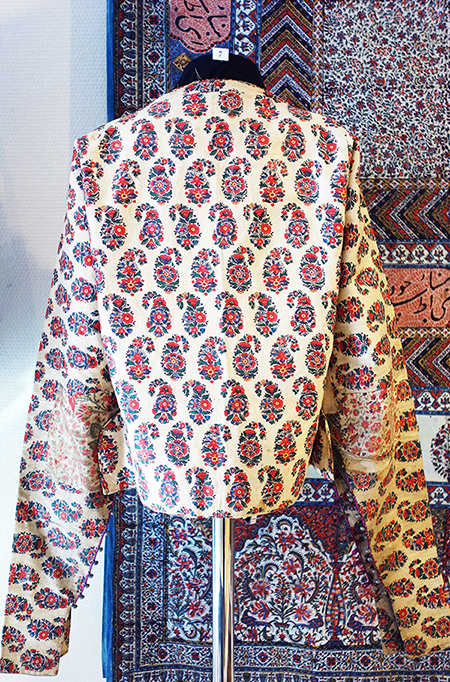From Buteh to Paisley: The Story of a Global Icon

Late 19th century jacket for a woman in a glazed and block printed cotton, Iran
Augusta de Gunzbourg
Tuesday, April 12, 2022
This presentation will introduce the Textile Research Centre 2021 exhibition surrounding the Buteh or Paisley motif’s history.
This curved, drop-like shape is one of the rare forms that features on textiles from all around the world and on clothing worn by all genders or ages. The motif has many names and meanings according to the different cultures that have all adopted it. Seen on Indian saris or on the Queen of England’s clothing, the questions we ask are: where and when did this motif originate and how did it become such a global icon?
The way the motif traveled historically and geographically will be illustrated with a wide range of items with Paisley from the TRC’s exhibition such as Iranian Qajar jackets, 19th century British ladies’ shawls or even a modern Japanese kimono.
Augusta de Gunzbourg is a French Textiles and Asian Arts curator in the Netherlands, working with the Textile Research Centre in Leiden. Graduated from Leiden University in History, Arts and Cultures of Asia, she has worked on exhibitions dealing with clothing in the Second World War, Japanese men’s kimono at the turn of the 20th century and the history of the Paisley motif.
Her research focuses on how textiles relate to the concept of identity on a personal and societal level. Specifically, looking at how textiles, as objects of material culture, acquire evolving meaning as they are worn and travel across countries and history.
